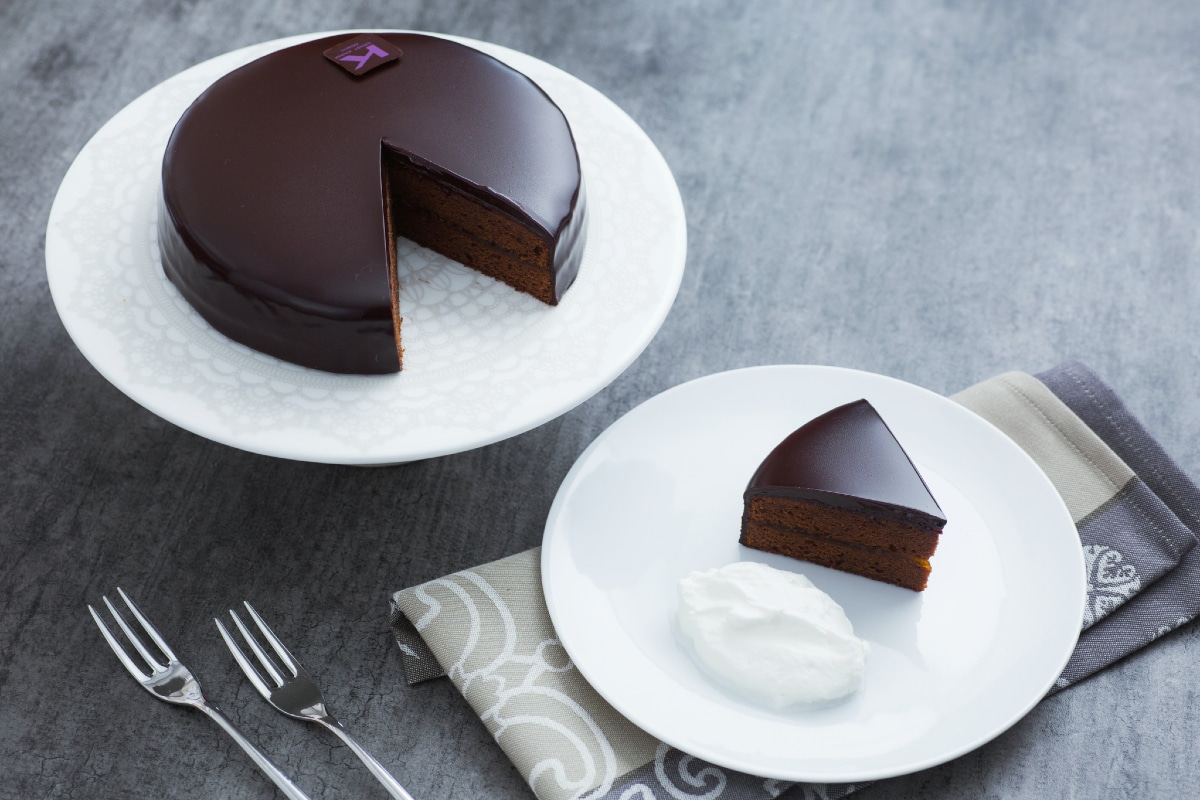Amaretti and Chocolate Tart
- Easy
- 2 h 10 min
- Kcal 385

In 1832 in one of the most central hotels in Vienna, which has now become a "sacred" temple of pastry, something special happened that marked the history of Austrian cuisine. Franz Sacher, a 16-year-old apprentice pastry chef and chocolate lover, invented the Sachertorte which is definitely one of the most famous and appreciated chocolate cakes in the world today. The story goes that the young Franz, who was replacing a sick chef that day, was preparing a dessert for the very sweet-toothed Prince Von Mitternich Winnesburg and, after much thought, decided to combine simple and traditional elements like chocolate and jam to create a delicate and tasty dessert. Apparently, the dessert was a great success and from that day on, young Franz Sacher had a lot to do to prepare this cake which also took his name: the Sachertorte. Since then, the fame of the Sachertorte has spread all over the world and even though thousands of people continue to prepare it, the original recipe is jealously guarded in Vienna and is not revealed to anyone. We propose the version made by Ernst Knam, a real guarantee when it comes to chocolate!
The Sachertorte is so loved that it has inspired many delicious variations, such as:

To prepare the Sachertorte, first transfer the chocolate in small pieces into a mixing bowl 1 and melt it in a double boiler 2. If you prefer, you can melt the chocolate in the microwave, operating it a few seconds at a time and stirring at each interruption so as not to burn the chocolate. Meanwhile, place the soft butter and powdered sugar 3

and a pinch of salt 4 in the bowl of a stand mixer. Also add the seeds from the vanilla pod 5 and start to work the mixture with the whisk 6 until you get a creamy consistency.

Then pour the lightly beaten egg yolks in two times 7 and continue to whip the butter 8; it will take about 8-10 minutes. It is important that the mixture of powdered sugar, egg yolks, and butter is well whipped so that the batter develops well during baking. Now, ensure that the chocolate you have melted has a temperature between 113°F and 131°F; it is preferable to use a thermometer to measure it: if it were too high, it might melt the butter, otherwise, it might make the mixture too compact. At this point, add the chocolate to the butter and yolk mixture 9 and continue to stir

until you get a uniform mixture 10. Then pour the egg whites into the bowl of a stand mixer and start whipping at high speed 11. As soon as they are white and foamy (when they start to "rise") slowly add the granulated sugar, always a little at a time 12; it is important to wait for the egg whites to be slightly whipped before adding the sugar, otherwise the egg white will become too heavy and will have much more difficulty in whipping.

The egg whites should not be whipped too stiffly, but you should stop just a moment before 13 otherwise when you go to fold them into the mixture they will continue to whip and the cake, once baked, may collapse. At this point fold the egg whites in two times into the yolk and chocolate mixture 14 and mix with a spatula 15 or with a whisk.

Then also add the already sifted flour 16 andmix from top to bottom with a spatula 17, until you get a smooth and uniform mixture 18.

Butter and flour a 7 inch round cake pan, then pour the mixture inside, level the surface 19 and bake in a preheated static oven at 338°F for 35-40 minutes. After this time check the doneness with a toothpick, then remove the cake 20; do not worry if the cake is cracked on the surface. Let the cake cool completely, before unmolding it by flipping it onto a surface. Then cut the cake into two disks, using a long serrated knife 21.

Arrange about half the dose of apricot jam inside 22 and spread it with a spatula over the entire surface 23. Cover with the second disk 24

add more jam on the surface 25 and using a spatula spread it everywhere to create a veil, even on the edges of the cake 26; this way the final effect will be shinier. Transfer the cake on a cooling rack 27 and take care of preparing the ganache.

Place the cream in a saucepan and bring it to just boiling 28; as soon as it starts to boil turn off the heat and add the chocolate 29. Stir with a whisk until the chocolate is completely melted and well combined 30.

Then transfer the ganache into a bowl 31 and use it to glaze the cake 32, helping yourself with a spatula and tapping it gently on the surface in order to cover both the surface and the edges and smoothing it at the same time 33. To be smooth and shiny the ganache should have a temperature of about 104°F.

At this point place it in the refrigerator (at 39°F) for about 20 minutes 34. Then transfer the sacher cake onto a serving plate 35 and serve each slice pure or together with some unsweetened semi-whipped cream 36.